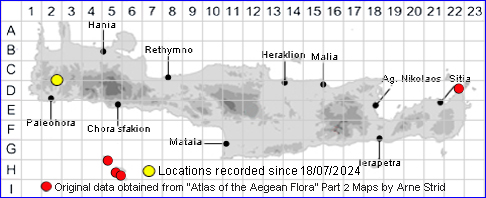
SPECIES DESCRIPTION
ALLIUM LONGANUM
Family and Genus:- See- ALLIACEAE/Sect. MOLIUM
Common name:- None
Homotypic Synonyms:- None.
Meaning:- Allium (L) The ancient Latin name for garlic.
Longanum (L) From an Indian vernacular name "longyen" for the fruit
of Euphorbia longana
General description:- Short to medium, bulbous perennial, smelling strongly of
onion or garlic when crushed.
Bulbs:-
1) 0·8-1·5 cm. diam, ovoid; outer tunics membranous, not pitted.
Stems:-
1) 15-42 cm, terete.
Leaves:-
1) 2-3, up to 300 x 3-8 mm, linear.sparsely or profusely ciliate.
Flowers:-
1) Spathe, up to 1·5 cm.1-valved, often 2-lobed, persistent, a little shorter than the
pedicels.
2) Umbel, 2-4·5 cm. diam. fastigiate, with 6-25 flowers.
3) Pedicels
a) 8-20 mm.
4) Perianth, campanulate.
5) Perianth segments, white, pink-tinged, narrowly oblong, unequal.
a) outer 7-12 x 4·5-6 mm.
b) inner 6-10 x 3-4·5 mm, truncate-rounded and emarginate.
6) Stamens, included.
a) filaments unequal, outer, 3·5-4·5 mm, inner. 5-6·5 mm, narrowly triangular.
7) Anthers yellow.
Fruit:- Capsule 4 mm.
Key features:-
1) Stamens, 1/3-2/3 as long as perianth-segments.
2) Perianth-segments, 3·5-6 mm. wide, with almost truncate-indented apex.
3) Filaments, triangular.
Habitat:- Coastal cliffs and dry open shrubby vegetation on hillslopes, 0-250 m
Distribution:- Sparsely scattered across the Aegean region, also in Cyrenaica and
coasts of Egypt. An example of the phytogeographical connection between the S
Aegean area and N Africa (notably Cyrenaica). Rare on Crete known from the far
north east and the islands of Gavdopoula and Gavdos.
Flowering time:- End of Mar to mid-May.
Photos by:- Christopher Cheiladakis
